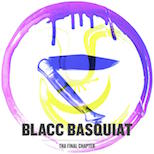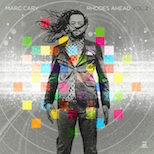Just In Time
06.15.2011
MUSIC
L+T: Definitely. So you’re more at home onstage than, say, in a recording booth?
EB: No. It’s the same. It’s just a different energy. Being onstage is creating a moment. In the booth is perfecting a moment because you get to do it over and over until it’s the way you envisioned it in your mind. It’s not better nor not better. It’s just different.
L+T: What about being in front of the camera and being behind the camera?
EB: I’ve directed every video I’ve ever done, from 1997 until now. It’s something I love, I had to learn. I don’t have formal training as a director. I’m not a technical camera operator, but I’ve learned how to manipulate it and get my visual ideas across. And it’s fun for me. My favorite video that I’ve directed, well, three are “Other Side of the Game”—that was in one shot where I had to choreograph everything. And “Honey”—I like the post-production that I did. And “Love of My Life”—that story of hip-hop going through doors.
It’s fun. It’s a learning experience. I learn something new every time, whether from the cinematographer or if someone’s co-directing with me.
L+T: So it helps you evolve.
EB: Yeah. Absolutely. [“Out of My Mind, Just In Time”] was great. I actually shot that one a year ago and I just now put it out. I want to do a lot more in post. But I said, ‘I’ll just start putting them out’—you know, this is the age of social revolution. When you feel it, put it out. There’s no rules anymore. I don’t have to have a single out to have a video. Very freeing. Especially for an artist like me—I take my time with everything.
L+T: And I noticed with that one and “Window Seat,” there’s a certain nakedness to their artistry. And obviously with “Window Seat” where you are nude.
EB: I was inspired by a group called Matt & Kim. They put out a video where they walk through Times Square and strip down nude. They told me later that it was choreographed. I didn’t know if it was or not. It just doesn’t matter—it just looked so freeing and beautiful. And I had my own reasons for my version. My feelings as a performance artist in the tradition of Josephine Baker and Yoko Ono or Nina Simone, Betty Davis—the wife of Miles Davis—those performance artists always had some kind of issue that they wanted to bring to the people and in order to do that, you had to do a shocking thing as a piece of art in order to bring the dialogue into the forefront. And the object is to create dialogue. And this particular piece, I was bringing attention to a term called “groupthink.” “Groupthink” is a term coined by Reverend [Irving] Janis in 1972—a sociologist, a professor, a philosopher—and that term describes human beings who are afraid to go outside of the normal realm of thinking because they are afraid to be ostracized, criticized, or assassinated by the group. So, the way that rolls out in steps is like this: first, they become their own person. Then, they strip down all of the things they’ve learned in a form of unlearning. They’re nude. They’re vulnerable. And they’re free thinkers. And either they’re assassinated or alienated. And I took those steps in the “Window Seat” video.
You know, there are so many layers to art. You can pull back one or you can pull back many, and it depends on what you’re trying to understand or not understand. I think I’ve created an appropriate amount of dialogue—people understood it, gave energy to it. People who didn’t understand also gave energy to it. And that’s what’s most important about it.
L+T: So did that line of thinking about nudity and freedom carry over into the “Out of My Mind” video in terms of the stripping down, stripping away?
EB: Nah. I’ve been butt naked my whole career. I have. It’s just a part of who I am. Was I butt naked in “Out of My Mind,” too?





